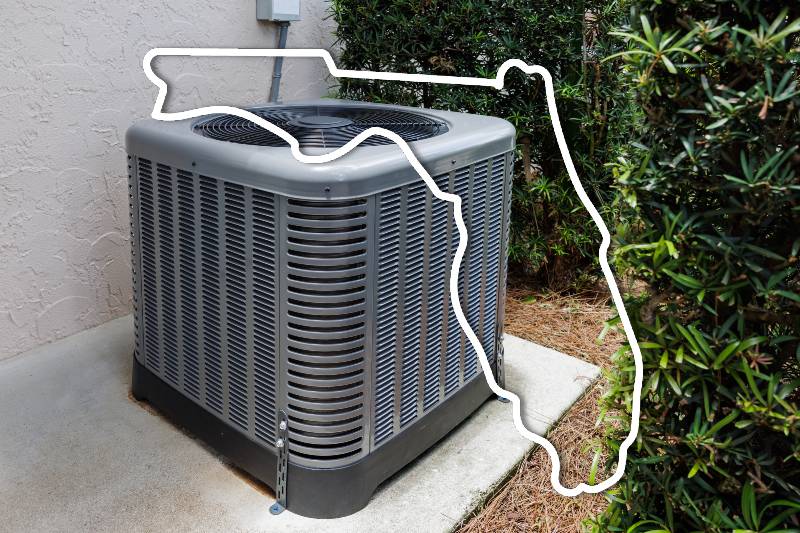Your Ultimate Guide to Realizing Your Homeownership Dreams
With the real estate landscape constantly evolving, it’s natural to have a mix of excitement and apprehension about this significant investment. Whether you’re a first-time homebuyer or a seasoned investor, our step-by-step homeownership guide is designed to prepare you for a successful home purchase. From understanding market trends, including mortgage rates, to how to seal the best deal on your dream home, we’re here to walk you through each step. Our advice and insights are based on the latest market research, ensuring your house-buying experience is as smooth and as well-informed as possible. We’re here to equip you with the knowledge and confidence to make informed decisions.
Step 1: Assess Your Overall Readiness to Buy A House
Did you know your savings balance and financial stability are essential, but it’s just as important to get yourself mentally prepared. Are you ready to move? Moving involves a lot of preparation, which can be both physically and emotionally taxing. You’ll need to be able to carve out the time to make the move happen. In addition, moving may involve losing easy access to friends and your favorite local establishments. Know that moving may put some distance between you, but you will likely add to your circle of friends and favorite neighborhood spots – something you wouldn’t do if you didn’t land your new dream home!
Investing in a home is a significant commitment. So, it’s also important to consider how buying a house fits with your overall life plans. If you’re buying a house with a partner, a frank conversation should be had about financial expectations and shared goals. Discuss your career trajectories, family plans, and how you’ll handle the new responsibilities of homeownership together. Are you and your partner financially in sync? Could your job whisk you away to a new city? Might you hear the pitter-patter of little feet soon? These life queries will paint a clearer picture of whether it’s the right time to buy a house.
Step 2: Conduct a House-Buying Financial Health Check
Think of house-buying as perhaps the most significant purchase of your life. Financial wellness is key. Understanding current mortgage rates and how they might affect your budget. Tools like Property.com’s Affordability Calculator give you a reality check on what you can truly afford, helping you ground your home aspirations. You might be tempted to aim high with that hefty mortgage approval, but will that leave room for life’s other pleasures and needs? Your gross income, monthly expenditures, existing debt, savings, and down payment amount (more on that below) will allow you to see the monthly sum of your mortgage payments and get a clearer picture of your finances as a homeowner.
Lenders typically advise that your mortgage payments shouldn’t exceed 28% of your pre-tax income, but remember, this is a ceiling, not a target. Your aim should be comfort within your budget, not stretching it to its limit.
Property.com tip: A wise goal is to have three to six months of living expenses saved up as an emergency fund on top of what you plan to use for a down payment and closing costs. This nest egg is vital for unexpected life twists that could affect your ability to pay the mortgage.
Step 3: Check Your Credit Score: It Can Save You Money When You Buy a House
Your credit score is central to a lender’s decision about whether or not you qualify for a mortgage loan. Your credit score is akin to a financial report card, summarizing your creditworthiness based on past behaviors. A higher credit score is the most powerful way to lock in a lower mortgage interest rate. Obtain a copy of your credit report – you’re entitled to a free one from each of the three major credit bureaus annually. Scrutinize it for errors and dispute any inaccuracies. If your score needs improvement, prioritize paying down high-interest debts and avoid opening new credit lines. Learn about the mortgage options for your credit score and how to build up your score.
Property.com tip: Building a strong credit score doesn’t happen overnight. If your score isn’t where you want it to be, it might be wise to delay home buying until you’ve improved it. In the interim, focus on making timely payments and reducing your debt-to-income ratio.
Step 4: Plan Your House Down Payment: Gone Are the Days When 20% Down Was the Unspoken Rule
The down payment is often the most significant upfront cost in the home-buying process. While 20% is traditional, many buyers opt for less to maintain liquidity. However, anything under 20% typically requires private mortgage insurance (PMI), which will increase your monthly outlay. Analyze your financial capability to determine how much you can realistically afford to put down.
Beyond personal savings, gifts from family or state and other down payment assistance programs, some of which are aimed at first-time home buyers, are viable sources to boost your down payment fund. Each funding source has specific regulations and tax implications, so conduct due diligence or consult a financial advisor to understand the best strategy for your situation.
Property.com tip: It’s not just about saving for the down payment—closing costs and a cushion for unexpected repairs should also be on your radar. Closing costs are generally 2%-5% of your purchase price.
Step 5: Assess Your Mortgage Options & Get Pre-approved
The mortgage market is awash with options, each with its nuances. A conventional loan might appeal to those with strong credit scores, while an FHA loan could be the route for those with less to put down or a less-than-stellar credit history. Veterans may benefit from VA loans, offering favorable terms like no down payment requirements. Perhaps a renovation loan is the right loan for you.
Understand the implications of fixed-rate versus adjustable-rate mortgages (ARMs). Fixed-rate loans offer stability with consistent payments, whereas ARMs might start with lower payments but fluctuate over time, posing a risk if interest rates climb.
Jumbo loans cater to more expensive homes, and renovation loans allow you to incorporate the cost of home improvements into your mortgage. Reflect on your long-term plans and risk tolerance when choosing the mortgage that aligns with your financial landscape.
A mortgage preapproval letter empowers you in your home-buying arsenal. It’s a lender’s statement of how much they’re willing to lend you based on a thorough review of your finances. Being pre-approved for a mortgage also signals to sellers that you’re a serious contender.
In order to get pre-approved, you first need to shop for a mortgage lender. It is highly recommended that you get loan estimates from several lenders to determine the one that’s best for you. This will allow you to compare their mortgage rates with current mortgage rates, know the closing costs, and compare mortgage origination fees.
Gather your financial documents – pay stubs, W-2 forms, bank statements, and any other assets or liabilities – and begin the application process with a lender of your choice.
Property.com tip: A preapproval has a shelf life – usually between 60 and 90 days – after which you’ll need to update your financial information.
Step 6: Create Your Home Wish List!
Crafting your home wish list is an exciting step! Consider if you want a detached house or townhouse with a yard or an attached unit like a condo for less upkeep, especially in urban areas.
Consider your desired location —weigh factors such as neighborhood safety, local amenities, and costs, including taxes and homeowners’ association (HOA) fees, if applicable. A good school district can boost your home’s long-term value. Finally, decide if you prefer a move-in-ready home or if you’re willing to invest in a fixer-upper, which could allow you to stretch your budget further in a competitive market. Just be ready for the renovation effort and expenses.
Step 7: Select a Real Estate Agent
A capable real estate agent is your guide, advocate, and confidant through the home-buying journey. Use Property.com’s Realtor Finder to tap into our network of trusted real estate agents. In addition, it is advisable to seek referrals, read reviews, and interview potential agents to find one with a proven track record and a clear understanding of your desires and budget constraints. A good agent will streamline the process, provide valuable local market insights, and negotiate fiercely on your behalf.
Step 8: Embark on Your Home Search
With your preapproval in hand and realtor by your side, the quest for your ideal home begins! This is the moment you get to upgrade your home-hunting game from virtual to reality – the phase of touring homes in the flesh. This phase requires your mind, body, and soul because when the market’s hot, you may have just one chance to wander through what could be your dream home before making your bid. Now, we know it’s like being at a premiere with other eager viewers, but try not to let that rattle you.
Property.com tip: Your smartphone is not just for scrolling through listings; it’s your best pal on these tours. Snap away! Those photos are your visual notes. Sure, there’s the sunlit nook that’s just begging for a lounge chair and the bonus room that’s shouting, ‘a home office is so valuable!’ But what about the not-so-glamorous aspects? The stove that’s seen better days or the deck crying out for some TLC might not be as memorable, but they’re just as important. These details can drive the offer price down and steer your conversation with an inspector. A picture is worth a thousand words, and in the house-buying process, it could be worth thousands of dollars!
Step 9: Make an Offer on Your House!
When you find a house that feels like home, it’s time to make an offer! It’s a pivotal moment where strategy and emotion intertwine, and here’s the blueprint for navigating it with finesse.
Lean on your real estate agent’s expertise to set a fair offer. They’ll consider comparable home sales, the property’s condition, and your financial comfort zone to suggest a number that’s competitive yet prudent. Your agent will draft an offer document specifying not only your price but also your ideal closing date, who shoulders which fees, and a seller’s response deadline. Integral to your offer are contingencies—safeguards like home inspections that protect your interests. You may also want help from a real estate attorney. Some states require a lawyer to be involved in the transaction.
Anticipate the seller’s counteroffer—maybe a higher price or a different timeline. It’s essential to understand the sellers’ situation—knowing they’re ready to move quickly can benefit you. Here, your agent’s negotiation skills come into play. Will you compromise, stand firm, or explore other options? Each counteroffer is a fresh chance to align both parties’ goals. If your offer is declined, don’t lose heart. Your agent will help you decide whether to adjust your bid or pursue a different path.
Once terms are agreed upon, your offer transforms into a contract. You’ll make an earnest money deposit as a gesture of good faith, typically held in escrow until you close.
Step 10: Secure Your Mortgage
Now comes the moment to select your financial partner – your lender – who will educate and guide you through the process of securing a mortgage for your dream home.
Imagine the loan application process as a thorough interview about your financial life. Most lenders follow the well-worn path of the Uniform Residential Loan Application. This form is quite the questionnaire, and it’s your chance to showcase your reliability as a borrower. It’s a bit like online dating – except instead of wooing a partner, you’re convincing a lender you’re suitable for a mortgage.
Be prepared for the digital equivalent of rolling up your sleeves – it involves a lot of document uploading. You’ll need to gather W-2s from the past two years to show your earnings history, recent pay stubs, and tax returns that act as your financial biography. Your bank statements and details of any long-term debts come next, adding depth to your financial story. If generous family or friends have chipped in with gift money towards your home, you’ll need a paper trail for that, too. And, of course, you can’t forget to prove who you are with your ID and Social Security number.
Now, you’re almost at the summit, but there’s an important step – underwriting. This is where your lender dons their detective hat and combs through your finances with a fine-tooth comb. They’ll check if there are any red flags that might make lending to you too risky.
As they review your application, they’ll also appraise the property and conduct a title search to ensure everything is as it should be. In about 45 days, if all goes well, you’ll have conquered the paper mountain and can proudly plant your flag at its peak.
Step 11: Purchase Homeowners Insurance
Most mortgage lenders will insist that you have this insurance in place before closing on a house. It ensures that their investment—and yours—is protected. Think of homeowners insurance as your financial safety net for your most valuable asset. It’s designed to protect you from a multitude of risks, including damage to your home from natural disasters, theft, and accidents.
Step 12: Get a Home Inspection
The home inspection is an essential step that peels back the surface to reveal what issues might lurk beneath that pristine exterior. From potential plumbing disasters to hidden structural damage, a thorough check by a professional inspector can save you from future headaches and financial strain. A qualified inspector or a specialized home inspector, if your home has special features (septic system, retaining walls, pool system) or specific issues (mold or radon), is usually recommended by your real estate agent and can provide valuable peace of mind. An inspection may unveil problems, giving you a chance to discuss repairs with the seller or leverage issues found to negotiate the sale price.
Step 13: Get Your Home Appraised
Buying a house is likely the most substantial investment you’ll make, which makes the appraisal absolutely vital. A home appraisal is more than a formality; it safeguards the lender and ensures the money lent matches the home’s true value. Picture this: If a bank approves a $200,000 loan for a home valued at $175,000, both the buyer and the lender are at a loss. Therefore, an appraisal contingency in your purchase offer isn’t just wise; it’s financial prudence—allowing you the flexibility to renegotiate or even withdraw if the home’s appraised value falls short of your offer.
Step 14: Close, Close, Close on Your Home!
As part of your final steps, it’s wise to follow our comprehensive “Home Buying Checklist” available on Property.com, ensuring you’ve covered all your bases before the big day. The final step in your house-buying journey is closing. Review the closing disclosure carefully, ensuring the numbers match those in your loan estimate. A final walk-through guarantees the property’s condition meets your expectations. On closing day, you’ll sign the legal documents, pay the closing costs, and receive the keys to your new home!
Wrapping up our step-by-step guide on buying a house in 2024, we hope you are now well-informed on the steps involved in a successful house purchase. Keep in mind that your path to homeownership is unique and shaped by your financial health, life goals, and your local market conditions. Purchasing a home isn’t just a financial transaction; it is building your future. And whether in 2024 you are buying your first house or a new addition to your investment portfolio, we here at Property.com are here to help you grow the value of your home year in and year out. Welcome home!
At Property.com, we’re here to guide you through every step of your real estate journey. Learning the steps involved in buying a home is just one of the many resources we provide to help you achieve your real estate goals.
Keep exploring our many helpful articles and resources, and stay informed on the latest news.
Sign up here for news on what’s important to you. Your real estate dreams await! With Property.com as your partner, you have the power to make them yours.












0 Comments